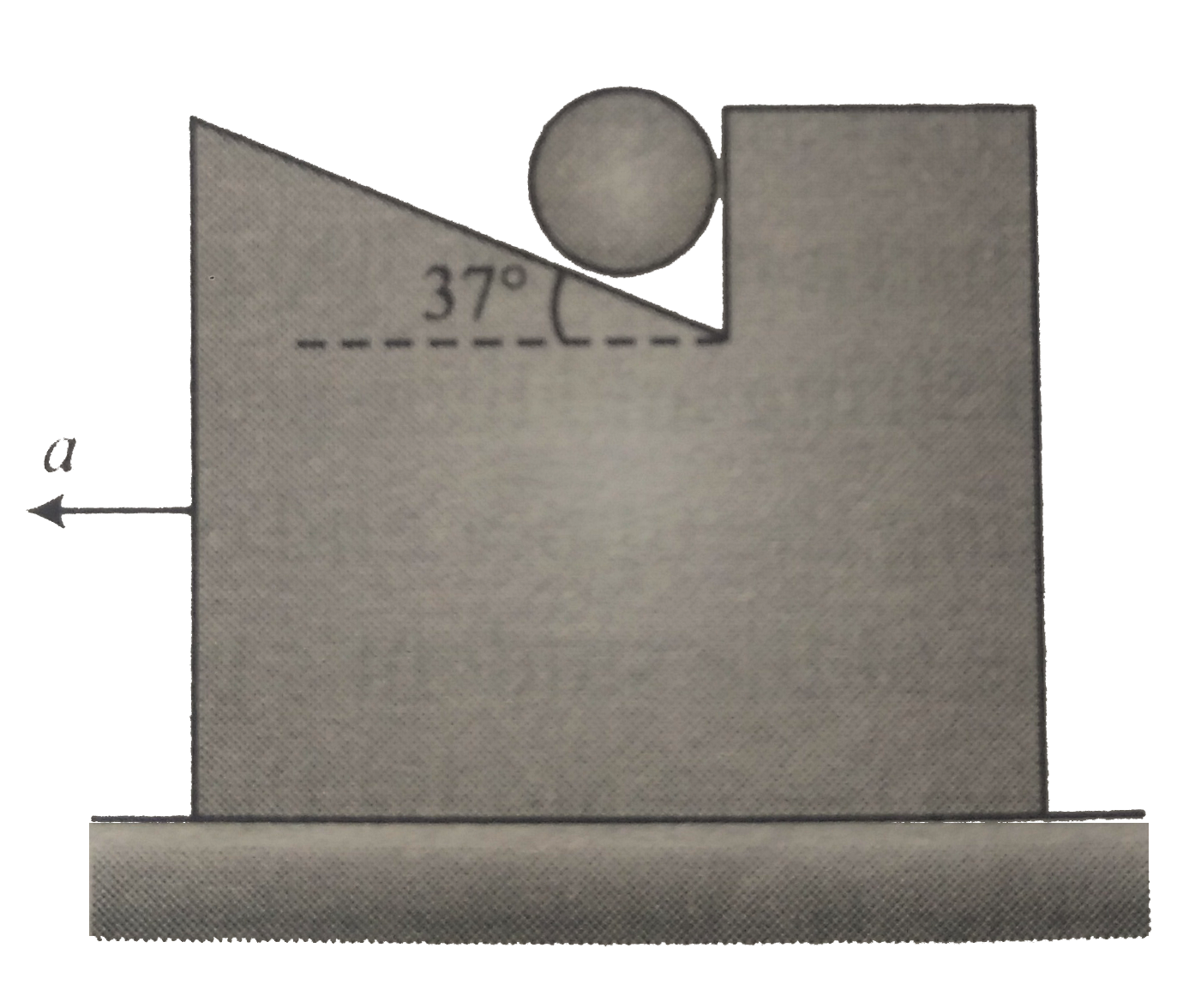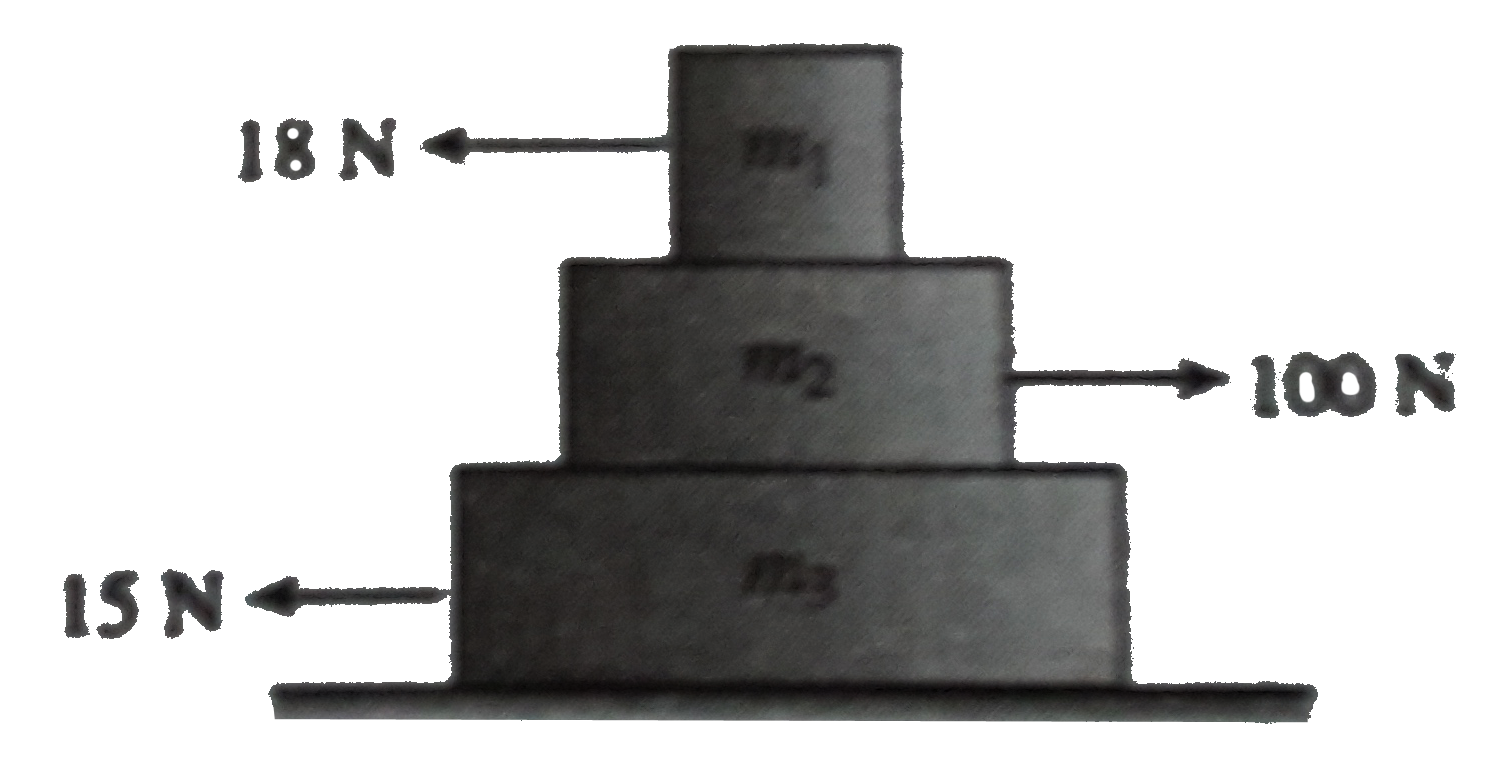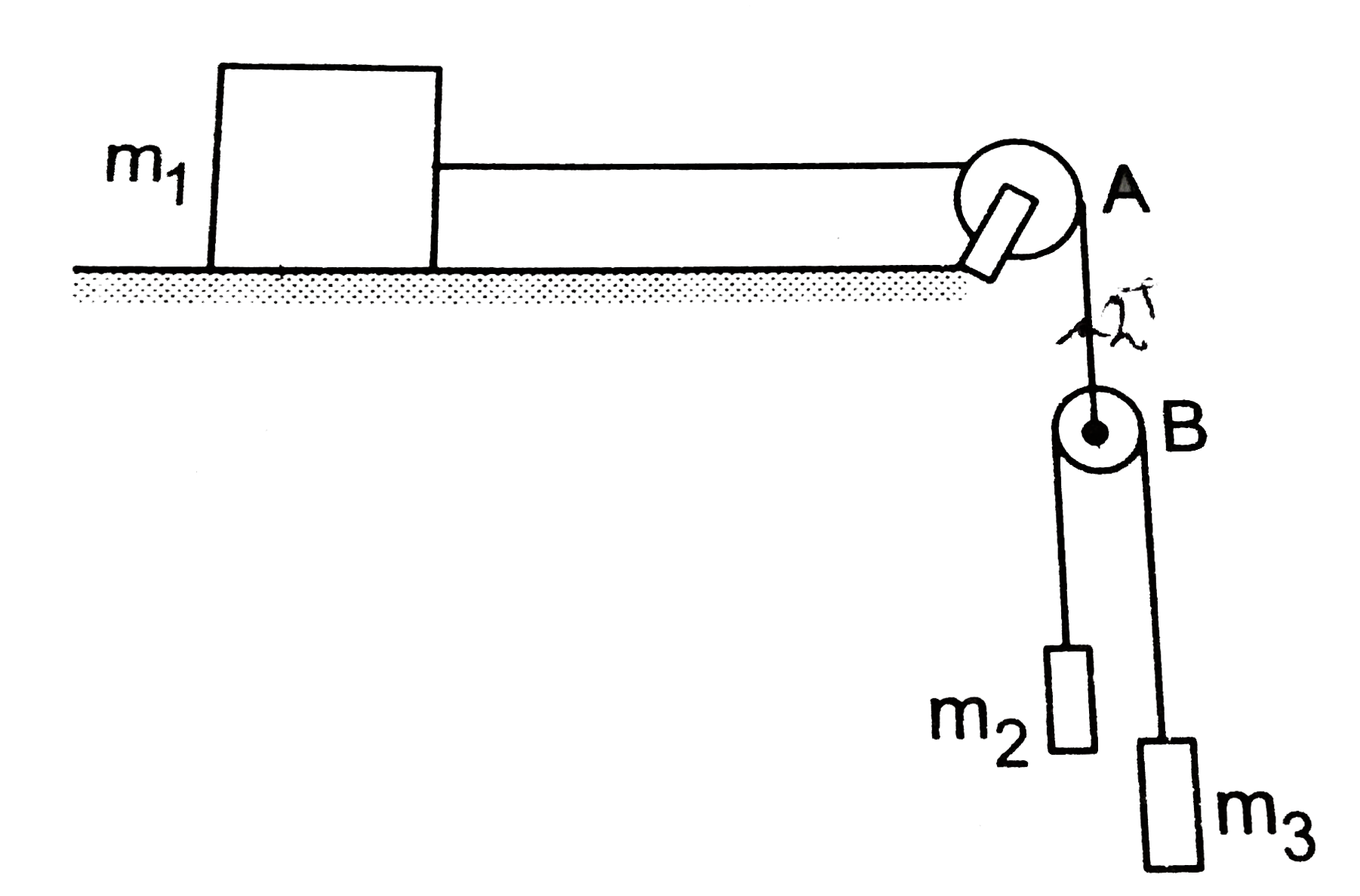
Find all the normal reaction NAG,NBG,N(AB) and the acceleration of A and B (All surfaces are friction less):
(a) NAG=100N,aA=2ms2
(b) NBG=50N,NBG=150N,aa=aB=0
(c ) NAG=100N,NBG=50N,NAB=20N,aA=aB=2
(d) NBG=50N,NAG=150N,aA=2,aB=0
Topper's Solved these Questions
- BOOK - CENGAGE PHYSICS ENGLISHCHAPTER - CENGAGE PHYSICS DPPEXERCISE - Single Correct Answer type491videos
CENGAGE PHYSICS DPP
- BOOK - CENGAGE PHYSICS ENGLISHCHAPTER - CAPACITOR AND CAPACITANCEEXERCISE - Integer5videos
CAPACITOR AND CAPACITANCE
- BOOK - CENGAGE PHYSICS ENGLISHCHAPTER - COULOMB LAW AND ELECTRIC FIELDEXERCISE - Single Answer Correct Type22videos
COULOMB LAW AND ELECTRIC FIELD
Similar Questions
For all n∈N,Σn
View SolutionIn the sitution shown in figure there is no friction between 2kg and ground.

a. For what maximum value of force F can all three blocks move together?
b. Find the value of force F at which sliding starts at other rough surfaces.
c. Find acceleration of all blocks, nature and value of friction force for the following values of force F (i) 10N (ii) N and (iii) 25NView Solution
Knowledge Check
- Question 1 - Select One
All N2 fixers belong to
AEubacteriaBalgaeCplantaeDprotista
The system shown in fig. is given an acceleration a towards left. Assuming all the surfaces to be frictionless, find the normal reactions applied by wedge on the sphere.
 View Solution
View SolutionFor a car taking a turn on a horizontal surface, let N1 and N2 be the normal reactions of the road on the inner and outer wheels respectively
View SolutionFigure shows three blocks on a rough surface under the influene of a force P of the same magnitude in all the three cases. Coefficient of friction is the same between each block and the ground. What possile relation holds between the magnitudes of normal reaction and friction force?(Assume that the blocks do not overturn about edge.) Here fA,fB and fC are frictional forces and NA,NB and NC are reactions.
 View Solution
View SolutionConsider three blocks placed one over the other as shown in Fig. Let as now pull the blocks with the force of magnitudes 18N,100N and 15N Take m1=m2=m3=10kg If the coefficient of static and kinetic friction between all contacting surface are μg=0.2 respectively find the

(a) Acceleration of the block s
(b) Friction at each surfaceView SolutionLet n(A) = n, then the number of all relations on A, is
View SolutionThree blocks of masses m1,m2andm3 are connected as shown in the figure. All the surfaces are frictionless and the string and the pulleys are light. Find the acceleration of m1
 View Solution
View SolutionA cylinder rests in a supporting carriage as shown. The side AB of carriage makes an angle 30∘ with the horizontal and side BC is vertical. The carriage lies on a fixed horizontal surface and is being puplled towards left with an horizontal acceleration a . The magnitude of normal reactions exerted by side AB and BC of carriage on the cylinder be NAB and NBCresectively. Neglect friction everywhere. Then as the magnnitude of acceleration a of the carriage is increased, pick up the correct statement:
 View Solution
View Solution

